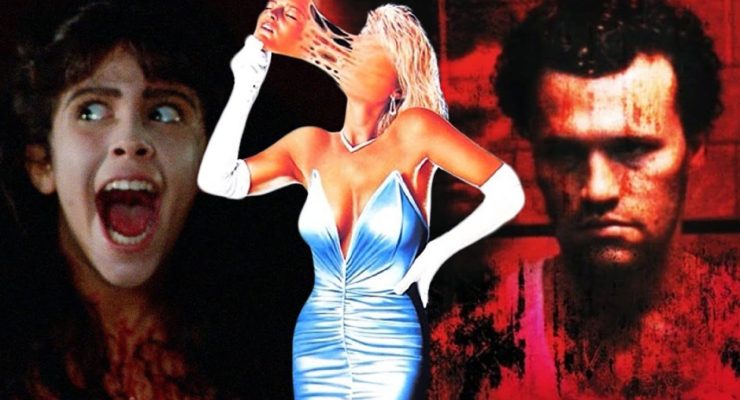Dracula, 1931.
Directed by Tod Browning.
Starring Bela Lugosi, Helen Chandler, David Manners, Dwight Frye and Edward Van Sloan.
SYNOPSIS:
The mysterious Count Dracula arrives in London from Transylvania and begins to charm his way into the life of the beautiful Mina. However, it soon becomes clear Dracula is something far more sinister than a charming European count.
It’s October once more dear readers and that means it’s time for another month-long odyssey into the vast void of cinematic horror. So for those of you joining me for another year of October Horrors, I bid you welcome.
Let’s get the month started off right by taking a look at a true classic of horror cinema. We’re heading all the way back to 1931, a time when the world was creeping towards chaos and conflict, people were poor and a little film starring a hammy Hungarian was terrifying audiences the world over. This is Dracula.
As I often say when reviewing iconic classics, mainly as a way to hide the fact that I’m woefully under prepared and lack any original insight, reviewing a “classic” film like Dracula is a daunting task. Mainly because I have not a clue idea as to what more I could say about a film whose reputation and influence still permeates pop culture to this day.
Well, I can start by saying that it really isn’t scary, like, at all. Now, before you rush to the comments to call me an idiot, which I expect you might to do anyway and you’d be right, I understand that what might seem tame nowadays was probably frightening to a 1930s audience. Although, given its presentation style I’d be surprised if even audiences back then were scared. What the film is though, is a very fascinating piece of cinematic history in action.
Adapted from a stage version of Bram Stoker’s original novel, the film feels, perhaps appropriately enough, very much like you’re watching a filmed play. Much of it takes place indoors and the film is filled with scenes of characters often giving somewhat hammy monologues (more on the acting later).
While this might be a problem for some viewers, I can forgive this theatrical approach to the story. After all, Dracula was the first horror film to use sound and thus who can blame the film-makers for wanting to take advantage of this then-new technology that gave films the gimmick of having actors who could now be heard.
The acting is where the film both succeeds and fails, but that really depends on how you look at it. Often the performances come across as very hammy and over the top throughout, but I again would forgive this aspect given that acting styles were vastly different back in the early 1930s.
One way to describe the acting is a bit like a mixture of the theatrical voice projection more akin to acting on a stage combined with elements of the more outlandish body language found in silent films. So you’ll often have scenes of people shouting while gesturing wildly or turning away from each other in overly dramatic fashion. If anything, the film is a fascinating document in which you witness one style of film acting entering its final years while it’s successor is still struggling to find its feet.
Bela Lugosi is, of course, the standout performer as the titular bloodsucker in a performance that has since become the gold standard for all screen depictions of the Count. While his English abilities might sound rather limited at first, Lugosi manages uses this quality to his advantage, with his often rather curious line deliveries being rather hypnotic and leaving you hanging on his every word.
The long drawn out delivery, coupled with Lugosi’s very thick Hungarian accent, only serves to heighten the more exotic and mysterious qualities of the character. Although Lugosi’s performance does veer into hammy territory and his slow delivery can often be a bit awkward at times, although I think this is very much a deliberate move on his part.
It’s a fascinating and hypnotic performance whose mysterious and curious qualities have rightly seen Lugosi cemented as the definitive big screen Count for over 80 years. Although the performance sadly worked out a little too well for Lugosi who found himself typecast to the point that upon his death he would be buried wearing the very cape that made him a cinematic icon.
While Lugosi lingers longer in the memories film fans, my personal favourite performance of the film is that of Dwight Frye as the Count’s deranged bug munching minion Renfield. Frye is amazing in his manic and psychotic performance, devouring the scenery with great relish and terrifying us all with his crazed eyes and genuinely unsettling and painful sounding chuckles. The rest of the supporting cast hit their marks but do come off as a bit cheesy by today’s standards, but again, it was a different era with different styles.
What the film lacks in scares it makes up for in atmosphere and presentation. The set design is impeccable with the film giving us the definitive big screen spooky old castle, an imposing structure filled with the familiar ghoulish sights of cobwebs, spiders, rats, bats and, um, armadillos? The fantastic set design is complemented by the excellent use of lighting which the shadows loom large over the sets and actors, with the addition of heavy fog giving the film a heavy dreamlike atmosphere.
With a brilliantly spooky atmosphere and an iconic performance from Bela Lugosi as the original big screen bloodsucker, I highly recommend that even the most casual of fans check out Dracula at least once in their lives. While it’s slow pacing and hammy acting might bore the more casual viewers, I don’t think you can call yourself a true horror fan until you have seen this genuine piece of horror history.
Scare Rating: ?
Flickering Myth Rating – Film: ★ ★ ★ ★ / Movie: ★ ★
Graeme Robertson














